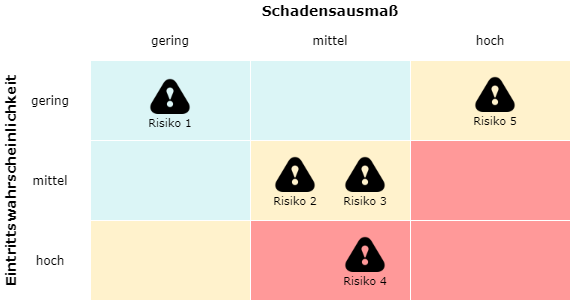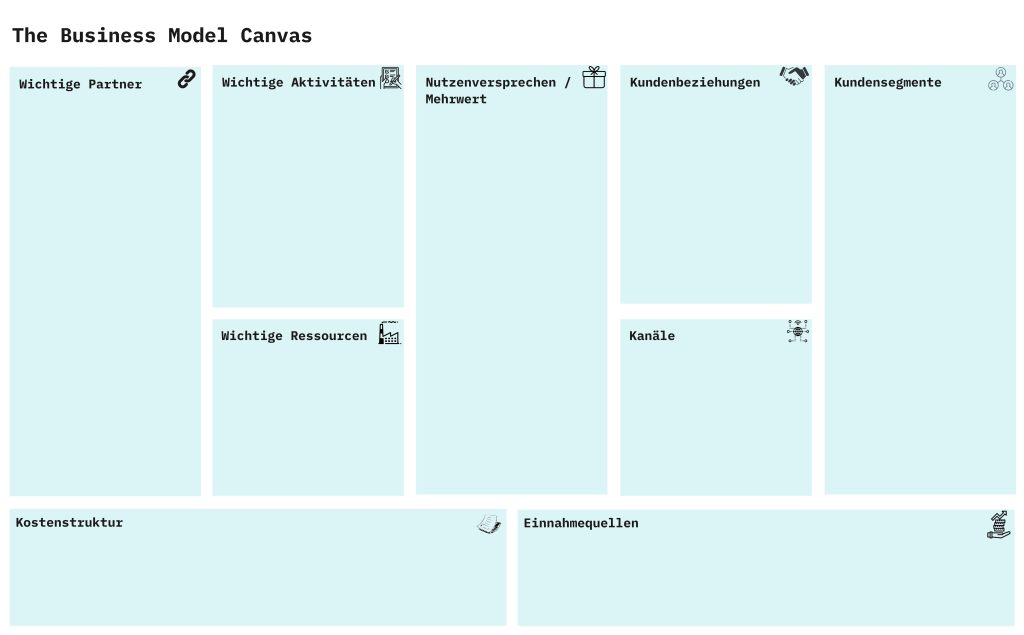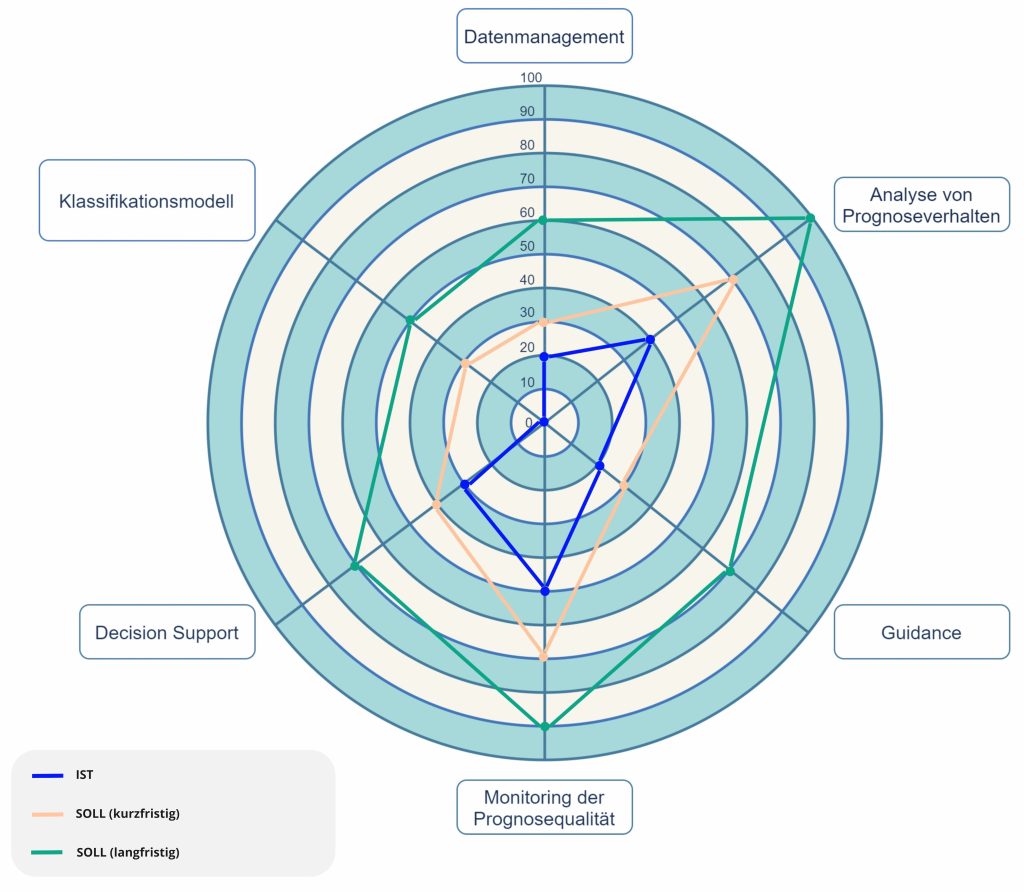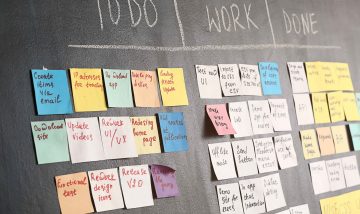Why even a good idea needs a feasibility study
To ensure that nothing stands in the way of a successful project start and that the idea does not remain just an idea, a feasibility study should be carried out before implementation.
by Sandra Wartner, MSc
It usually starts with a good idea. Then this should be put into practice as soon as possible and a project started. However, rushing into a project implementation is only a good idea in exceptional cases. Why? Because factors of influence that are not thought through in advance can quickly lead to the failure of a project. This is not only bad for business, but also a pity for the good idea (and the work you have already put into its implementation). Before starting, it is therefore important to check the feasibility of the idea, to identify and evaluate possible risk factors and to take into account economic factors such as finances and human resources as well as time schedules. In the following text, we introduce the feasibility study as an important instrument before the start of any project, describe its goals and show some practical methods and tools for efficient implementation. So that nothing stands in the way of a successful project start – and the idea does not remain just an idea.
Table of contents
- Reaching the goal with the right set of methods
- Risk analysis
- Business Model Canvas
- Maturity analysis
- Process optimisation with the right tool
- Author

A feasibility study provides a basis for deciding whether or how a project can be carried out and is therefore carried out by the contractor in the initialisation phase. The result is a comprehensive report on the feasibility of a project, which, in addition to legal and economic aspects, also examines the organisation and scheduling, but above all the technical feasibility. In practice, the study usually includes a comprehensive requirements and risk analysis. In practice, the extent to which a feasibility study is carried out and the methods used vary from project to project (or project idea).
Conducting a feasibility study is particularly important when the project idea is vague, there are many ambiguities, not everyone involved has the same understanding, the goals are not yet clear or the technical feasibility is simply questionable. Clients usually formulate what they want in the initial phase, but often have no or a very unclear idea of the concrete technical implementation, the technologies to be used and generally the feasibility, especially in complex projects. Within the framework of a requirements analysis, the client and contractor work out together what the client really needs. On this basis, the feasibility of the project can be examined. If a feasibility study is not carried out at the beginning, there is a great risk that unexpected restrictions will arise at the latest in the implementation phase due to risks that were not considered and that problems will occur.

Reaching the goal with the right set of methods
The contents and approaches of a feasibility study are not defined in a standard. This is a good thing, because every project faces different challenges. A suitable set of methods can be selected from the pool of possibilities, individually tailored to the existing needs and framework conditions. In advance, one should already think about a few essential prerequisites without whose fulfilment a feasibility study makes little sense: These are, among others, clearly defined project goals (SMART), strategic goals and non-goals, project boundaries as well as obligatory and optional results. After all, not everything that is technically feasible is also goal-oriented or satisfactory for the clients. Methods commonly used in feasibility studies include, for example, the following.
Maturity analysis
Requirements analysis
Business Model Canvas
Risk analysis
SWOT analysis
Cost-benefit analysis
Risk analysis
A quick reality check: a project rarely runs smoothly and positive issues are much preferred by staff than hedging against negative future scenarios. Nevertheless, risk analysis is an indispensable part of a feasibility analysis to be prepared for the unexpected. The aim of risk analysis is to create more transparency and awareness of influencing factors that potentially endanger the project. By addressing these risks ahead of time, the project team can prepare and also take preventive measures already. In risk analysis, three terms must be distinguished from each other:
- A cause is an existing factor that can potentially lead to a risk.
- A risk is an uncertainty that has a certain probability of occurring and becomes a problem when it occurs.
- An impact is a negative consequence when a risk occurs.
Risks can exist in different areas such as financing, planning or the project environment. Only if risks are identified, quantified and measures derived at an early stage can the extent of damage (e.g. resource problems, additional costs, time delays, failure of the project) be reduced. The result is a risk matrix that contains information on the identified risks as well as the extent of damage and also the (estimated) probability of occurrence. Since risks can also change over time, active risk monitoring should be carried out instead of a one-time assessment.

Business Model Canvas
A very helpful framework for strategic planning and development is the Business Model Canvas. The main benefit is the compact and visual representation of the business model in a scalable system. This can be used as a basis for discussion to build a common understanding and to recognise dependencies at a glance. On the one hand, the means necessary for implementation are presented (left half), on the other hand, values for clients and companies are documented (right half). The further structure is made up of nine elements:
- Value proposition/added value: What is our value proposition to customers?
- Customer segments: Who is the target group?
- Channels: How do I reach and inform potential customers about the offer?
- Customer relationships: What should the relationship with customers look like (from acquisition to regular customer care)?
- Revenue sources: What is the pricing model we use to earn our money?
- Important resources: What resources (e.g. financial, human, (im)material, technical) are necessary?
- Key activities: Which activities are necessary to be able to continuously guarantee or increase the success of the business model?
- Important partners: Who are our strategic partners?
- Cost structure: Which cost items and expenses critical to success need to be taken into account?

Maturity analysis
Maturity analysis is a practice-oriented method for determining the status of a certain group of factors or capabilities. On the one hand, the current maturity level (ACTUAL) can be determined, and on the other hand, short-term or long-term goals (TARGET) can be represented as future maturity levels in the same diagram. This analysis makes sense especially when an existing product or system is to be expanded and the further expansion stage is to be clearly defined. A clear advantage results from the descriptive representation through the visually prepared results and the unrestricted degree of freedom of factors. This provides a good overview of different development stages at a glance and at the same time a good basis for comparison (ACTUAL vs. TARGET). Specific improvement measures can be derived for the identified development potentials and weaknesses, thereby increasing the level of maturity.
The implementation of such a maturity chart is often done via a radar chart. In each level, a score between 0 and 100 (completely immature or fully mature) is assigned to each factor, which describes the degree of maturity of this factor in this level and is then connected with each other within a level via lines. However, it is not to be considered negative if certain factors never reach a maturity level of 100. The actual maturity levels required depend on the existing requirements at certain points in time.

Process optimisation with the right tool
For the best possible involvement and participation of all stakeholders, a strong focus on interactivity can support the process for the joint and successful elaboration of the content. This ensures that all points of view are collected, the different requirements are documented and the insights gained can be included in the final evaluation. In this way, a feasibility study can be carried out efficiently and in a target-oriented manner. Depending on the situation, different tools prove useful, such as a simple flipchart or online tools like Collaboard, Microsoft Whiteboard, InVision Freehand or Miro.
RISC Software GmbH has already gained a lot of positive experience with the virtual online collaboration platform Miro (https://miro.com). Here, several people can collaborate visually in real time on an infinitely large online whiteboard. The tool can also be expanded with numerous apps (e.g. Google Drive, video chat, etc.), which further simplify teamwork and make it more efficient. In the course of a feasibility study, such an online tool is also ideally suited as a basis for discussion and as a documentation tool. Based on a previously constructed guideline for the elaboration of individual components, the contents can be discussed and jointly edited and documented in the templates of the board. In this way, even in Covid-19 or home office times, a common understanding of the feasibility of a project is created and challenges are identified at an early stage. In this way, the right measures can be taken right from the start and resources can be planned in the best possible way, so that a successful implementation of the initial project idea can be started promptly.
This technical article was written as part of the FFG funding of the project “InnoFIT – Innovative Forecasting and Demand Adjustment through the Use of Sales Data from New Information Technologies” (FFG project number: 867471).
Contact
Author

Sandra Wartner, MSc
Data Scientist



